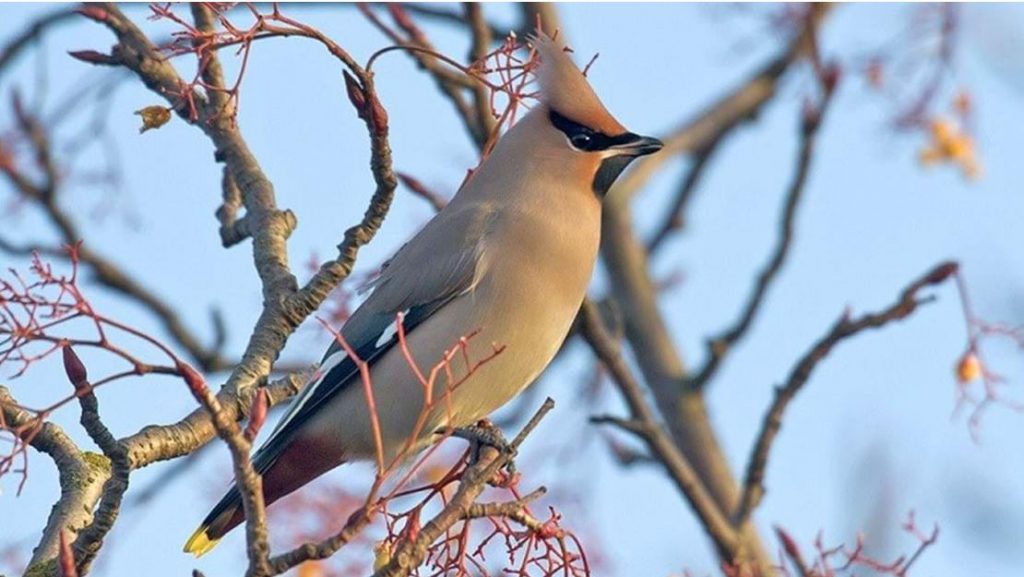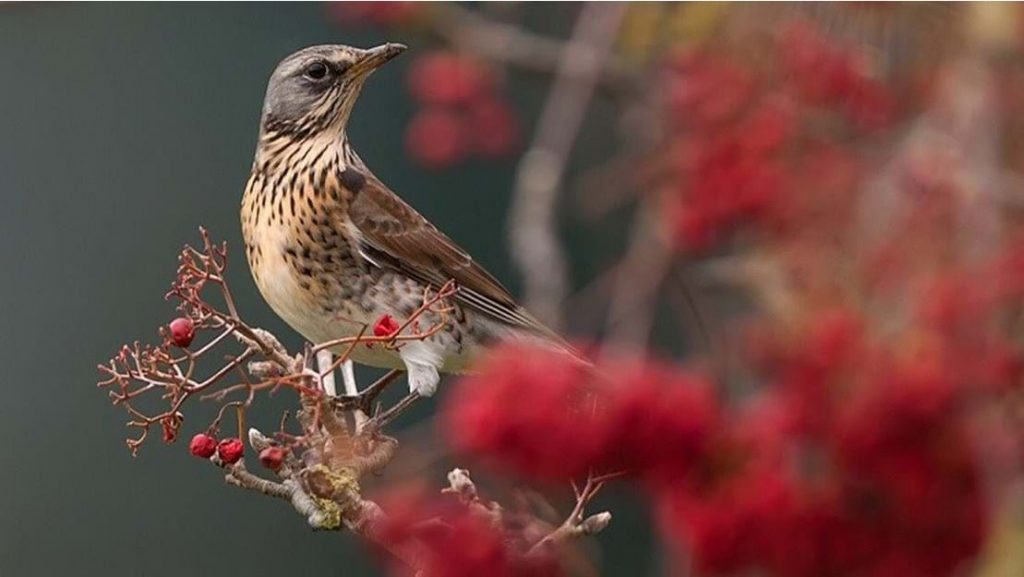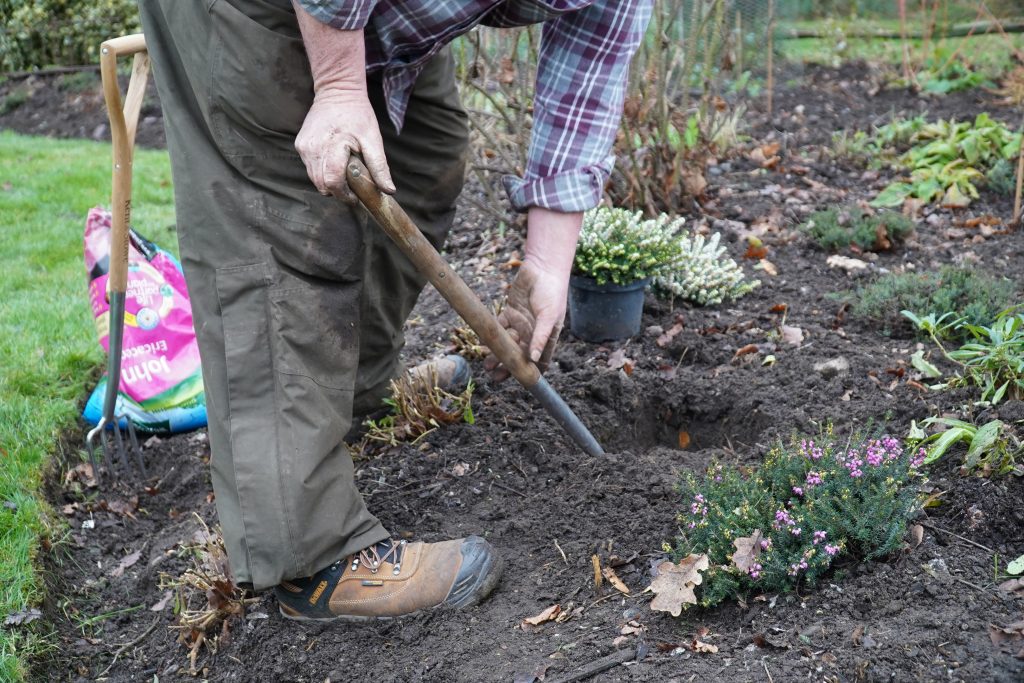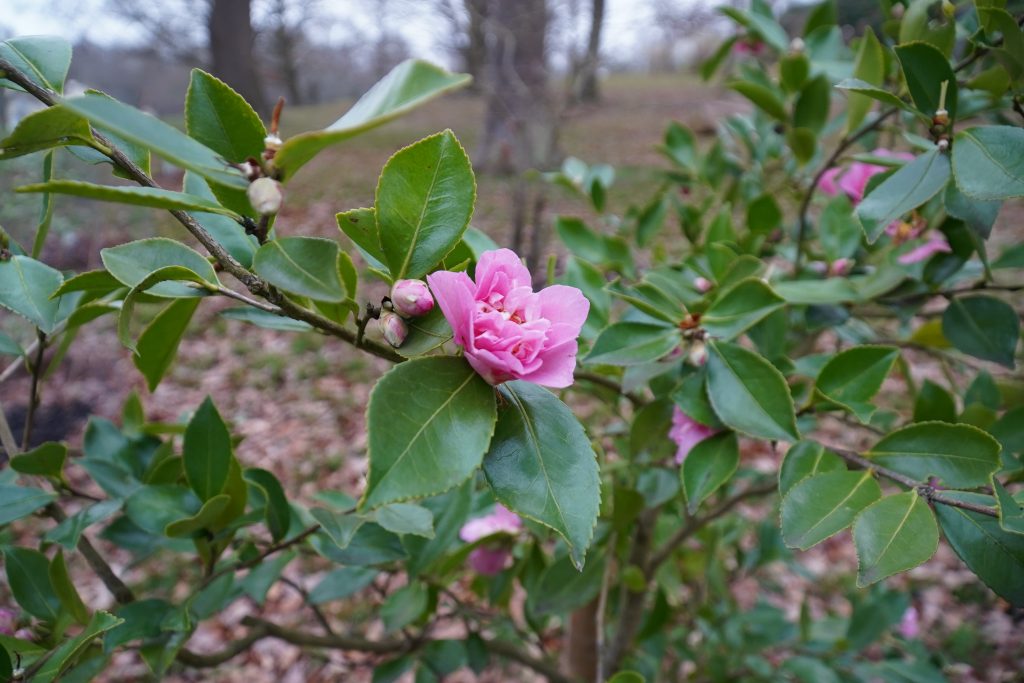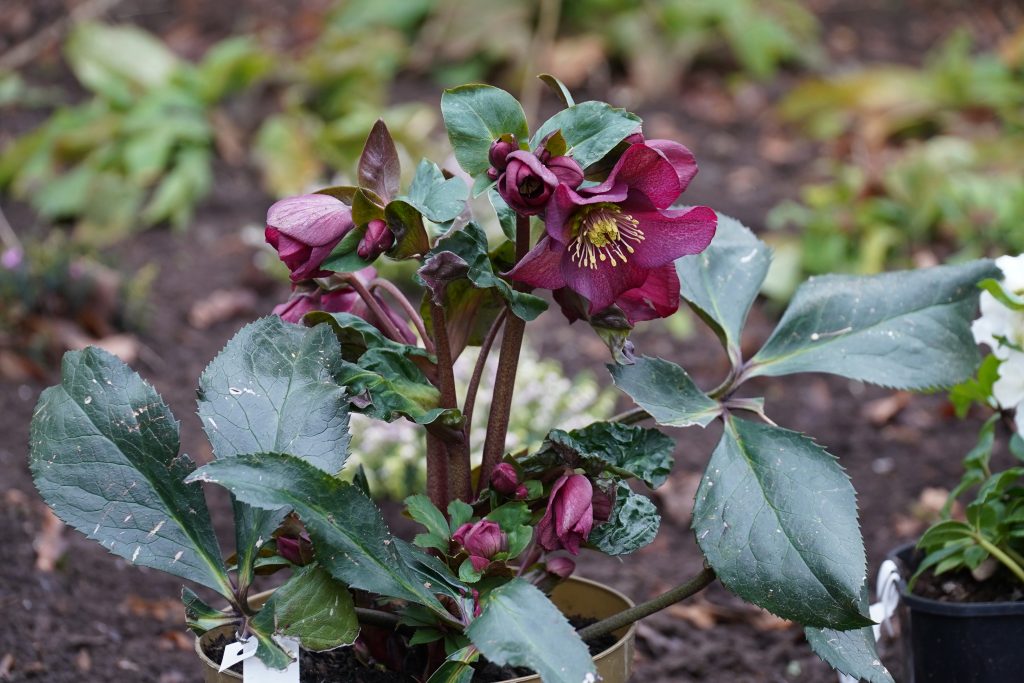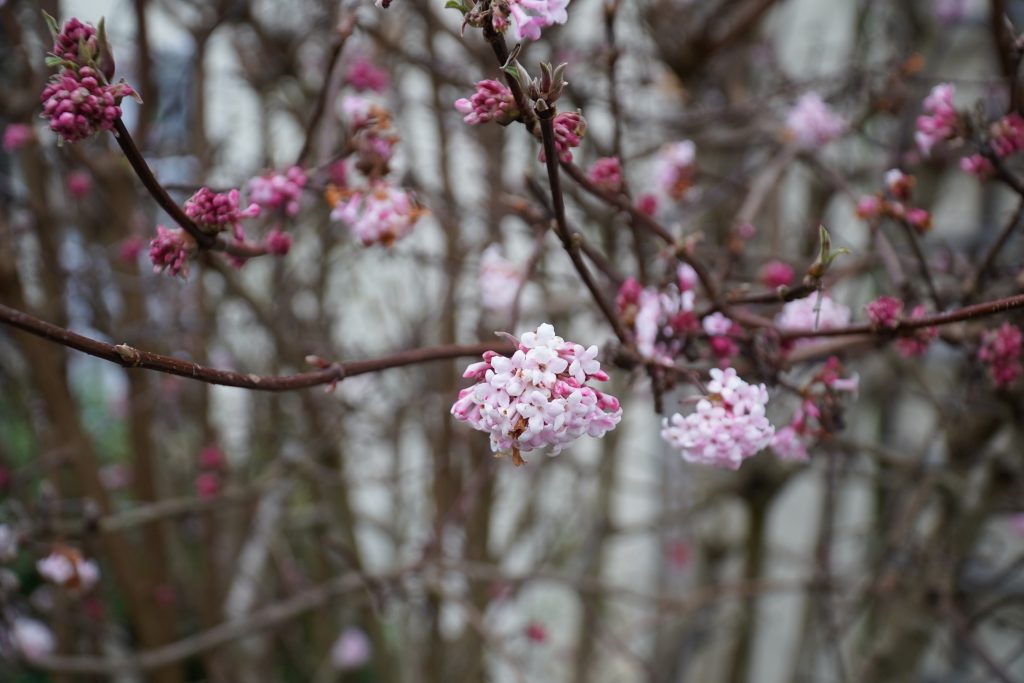January in the garden: New Year’s resolutions and jobs to do…
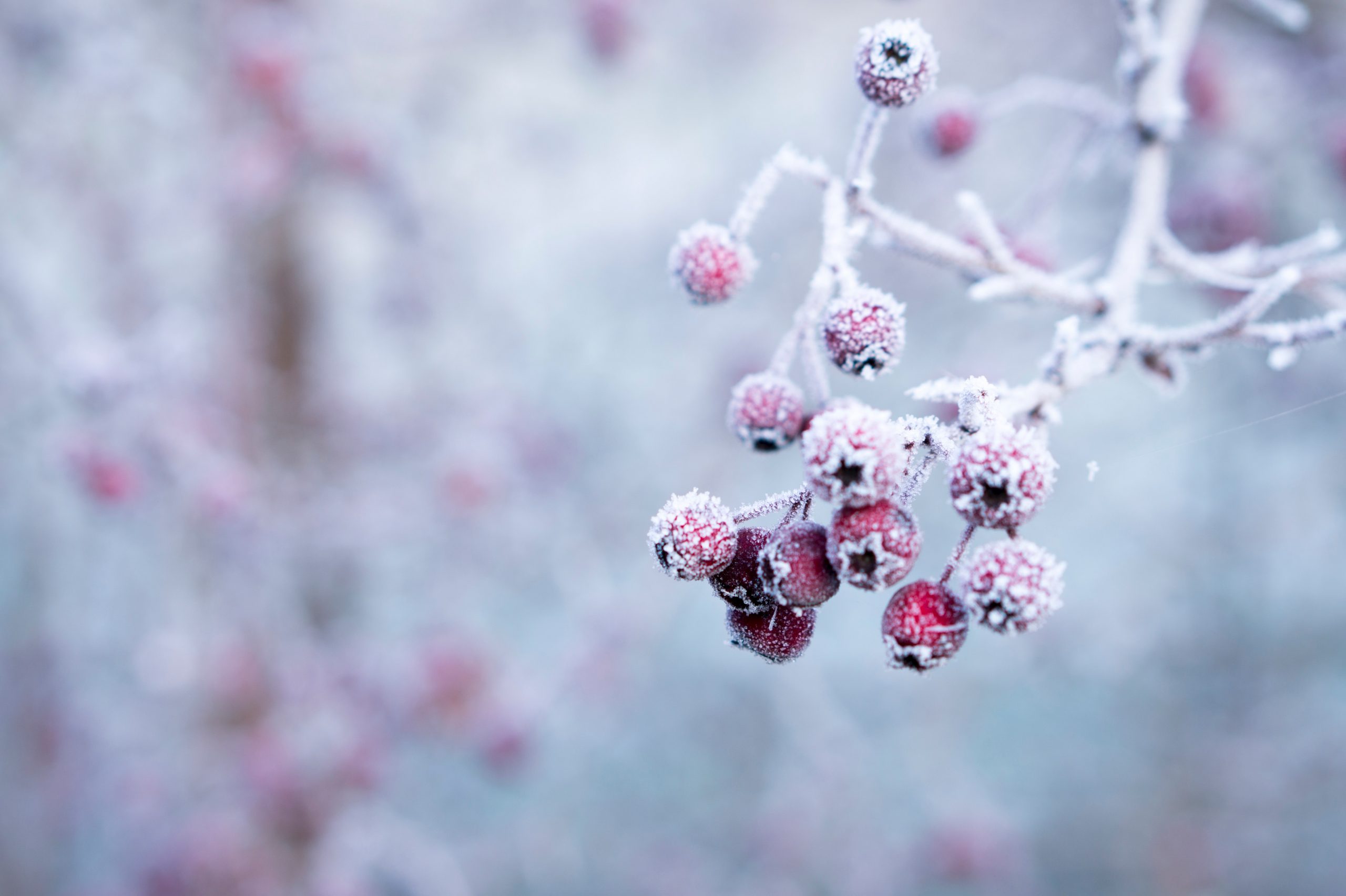
Your garden will always benefit from bouts of planning as well as doing, and there’s no better time than in January to have a good look round and make some well-judged resolutions about what you intend to change, plant, and improve during the coming year. Don’t be too ambitious and write it all down so you don’t forget. (It’s also a wonderful time to plan the National Garden Scheme gardens you want to visit in the year ahead. They are perfect for relaxation and inspiration!)
Far from being a time of dormancy there is plenty to keep you busy in the garden during January and it’s wonderful for your own health and wellbeing to get out into the fresh air, plan ahead and do some satisfying physical gardening that will reward you with riches later in the year!
Mulch Fruit Bushes
This is the ideal time to give fruit bushes a good covering with well-rotted compost that will break down into the soil over the next few months and encourage a good crop.
Sow Early Veg Seed
When the weather restricts the gardening we can do, it’s nice to start the year feeling active. A good way to do this is to get on with sowing the seed of veg and salads that will produce an early spring crop. Things like radish, and certain salads, are ideal.
Winter Prune Wisteria
To inhibit lateral growth and encourage flowering, the shoots and branches of wisteria should be pruned in mid-winter. Over time, this will help form a framework of flowering spurs that will produce larger, plumper, flowers.
Leaves off Bulbs
Over the next few weeks, a succession of different bulbs will be emerging – from small, early flowers such as snowdrops – to larger bulbs like tulips later in the season. None of these bulbs enjoy being covered with leaves, so to ensure they get plenty of sunshine, make sure you remove garden leaves regularly.
Write New Labels
Labels for your new plants and seeds are a small detail that can either make your garden look scruffy because you’ve not bothered and scribbled them off, or can add a little edge by being neat, or even decorative. So, allow yourself plenty of time and write them now when you’re not in a hurry – it will also help you concentrate on what you want to grow.
Order Summer Flowering Bulbs
At the time of year when you can do least in the garden, you can compensate with preparation. One of the pleasures of January and February is choosing summer-flowering bulbs such as lilies that you can plant once the ground warms up a little.
Choose a Structure
There is no doubt that the best time to plan any structural addition to your garden is in the winter, when the garden’s basic shape and framework is not changed by planting. It might be something as small as a support for climbing plants in a border, a wooden rose arch, or a new boundary fence. Whatever it may be, plan it now, and if the weather allows, put it in place.
Feed the Birds
This is the time of year when a lot of garden birds will be struggling to find food, so either put up a bird table, or, if you already have one, make sure it is regularly topped up with offerings. Make your own bird seed cakes treats with our great tips here
Bare Rooted Trees
Provided the ground in your garden is not frozen or waterlogged, plant new bare-rooted trees and shrubs during January and February, while they are fully dormant.
Indoor Cyclamen
You’re likely to have bought, or been given, an indoor cyclamen during the festive season, and it’s always nice to try and keep them for longer than one Christmas. The most important task once they finish flowering – and certainly within the next week or two – is to move them to somewhere cool and unheated. At the same time cut down any watering over a period of two weeks and stop any feed. Then they should stand dry until new growth appears in the summer.
Light for your Greenhouse
Frosts, followed by damp, foggy weather may have left your greenhouse with cloudy glass that blocks out the natural light. As the growing season begins you will want to maximise light, so now is an important time to keep your greenhouse glass clean and clear.
Do Some Digging
If your soil isn’t too sodden wet, and you have some digging or tidying to do, it is worth getting on with it as soon as possible. Continuing cold weather will help the soil break down nicely over the next few weeks and will kill off perennial weeds if you expose their roots.
Spray Peach Trees
If you grow peaches, and they are prone to suffer from leaf curl, this is the time of year to spray them.
Winter Prune Grape Vines
To ensure the best crop of grapes from a vine, this is the time of year to prune your plant. Cut side shoots back to one or two buds, and if it is a very old plant it helps to cut off the oldest sections of wood from the stem too.
Cloche for Seeds
You’ll be sowing seed in a few weeks’ time, and to make it feel as though winter is going away, it is worth working a chosen area of ground into a fine seedbed and covering it with a cloche. This will encourage the soil to warm up ready for your new season’s seed.
Resolutions
With your garden stripped back to the bareness of frozen winter, start the year productively. Take a pen and notepad, go out into the garden, (or look at it through the window) and think of three changes or improvements you would like to action in the coming year. The changes can be very simple, like adding a single new plant; or highly ambitious, like building that new conservatory. Either way, you’ll get a sense of achievement when they’re done in a few months’ time.
Indoor Winter Care
If you are keeping plants in pots indoors for the winter, remember that they should be occasionally checked to ensure conditions are still right. Keep them all out of chilly January draughts.
Plan for Veg
Having a year plan can improve your vegetable yield, as well as making the process of vegetable growing much more fun. Even if you’re only using two or three pots on a balcony, work out which vegetables you want to grow, and check the timing of their growing pattern. Then, write down the plan so you can profit from your organisation.
Early Carrots
Sow some seed of a short-rooted early carrot variety under glass to ensure a delicious crop of delicate baby carrots in late spring.
Protect Trellis
Trellises, and other wooden structures in your garden, need protection from the elements. During the winter, when you are probably unable to do a lot else in the garden, consider giving your trellis a coat of wood preserve in preparation for the coming spring.
Shallots
Clean shallot bulbs ready for planting in February. Divide the clumps you have lifted and store in late summer. Select the best bulbs, those with a diameter of roughly one and a quarter inches. Nip off the top string or stem as this will encourage birds to pull the bulb up when you plant it out.
Path Work
So long as the ground is not constantly frozen, any kind of brickwork, path laying, or other such maintenance is best done now, before you start getting busy with plants and other garden tasks.
Bird Tables
As winter drags on, it’s important to keep your bird table well-stocked, because food is still scarce. Position the table close to the house, as this often dissuades aggressive visitors such as starlings, and encourages more desirable ones like tits.
Sow Hardy Geranium Seed
Sow hardy geranium seed into a tray in a propagator.
Winter Flowering Shrubs
If you don’t grow any winter flowering shrubs, with their combination of delicate colours and scent, this is the time to see what they’re like and choose for yourself. At this time of year even one plant in flower is a great bonus.
Plant Tidying
Removing the dead or decaying tops, stalks, and foliage of plants from borders and other planted areas is an important and continuous task now.
Chrysanthemum Cuttings
Chrysanthemums grow best from cuttings taken now from the old plants that were dug up in late autumn or early winter and stored inside to protect them from the cold. By now, the root clumps are shooting with new growth, and these shoots provide the cuttings for new plants. It is best to choose shoots coming from the base of the plant.
Dead Foliage in Greenhouses
Because of the protection they offer, greenhouses encourage plants to hold onto their foliage longer than they would outdoors. This means that you are likely to have a lot of dying and decomposing foliage in the greenhouse just now, while in the garden plants have long finished dropping their leaves. In damp late-winter conditions it is a good idea to clear up such foliage as often as possible to minimize the chances of disease and mildew.
Mulch Lily Bulbs
Both established lily plants and newly planted bulbs will benefit from a generous covering of organic mulch such a well-rotted leaf-mould. In the short term, it will provide protection from any late spells of frosty weather, and afterwards, give nutrition to the growing plants.
Plan your garden visits for the year ahead
It’s the perfect time to settle down and explore the National Garden Scheme gardens opening near you – or diarising visits to the ones you’ve always wanted to visit and never quite made it! We also have over 1,ooo gardens that open by arrangement for groups – so you could take friends and family or a day special to you. Visiting a garden can be a wonderful treat – and your visits support some of the UK’s best-loved nursing and health charities – so make a resolution to visit all your favourites and to discover new ones too!
Visit the first open garden of the year and plan your snowdrop visits in February here





